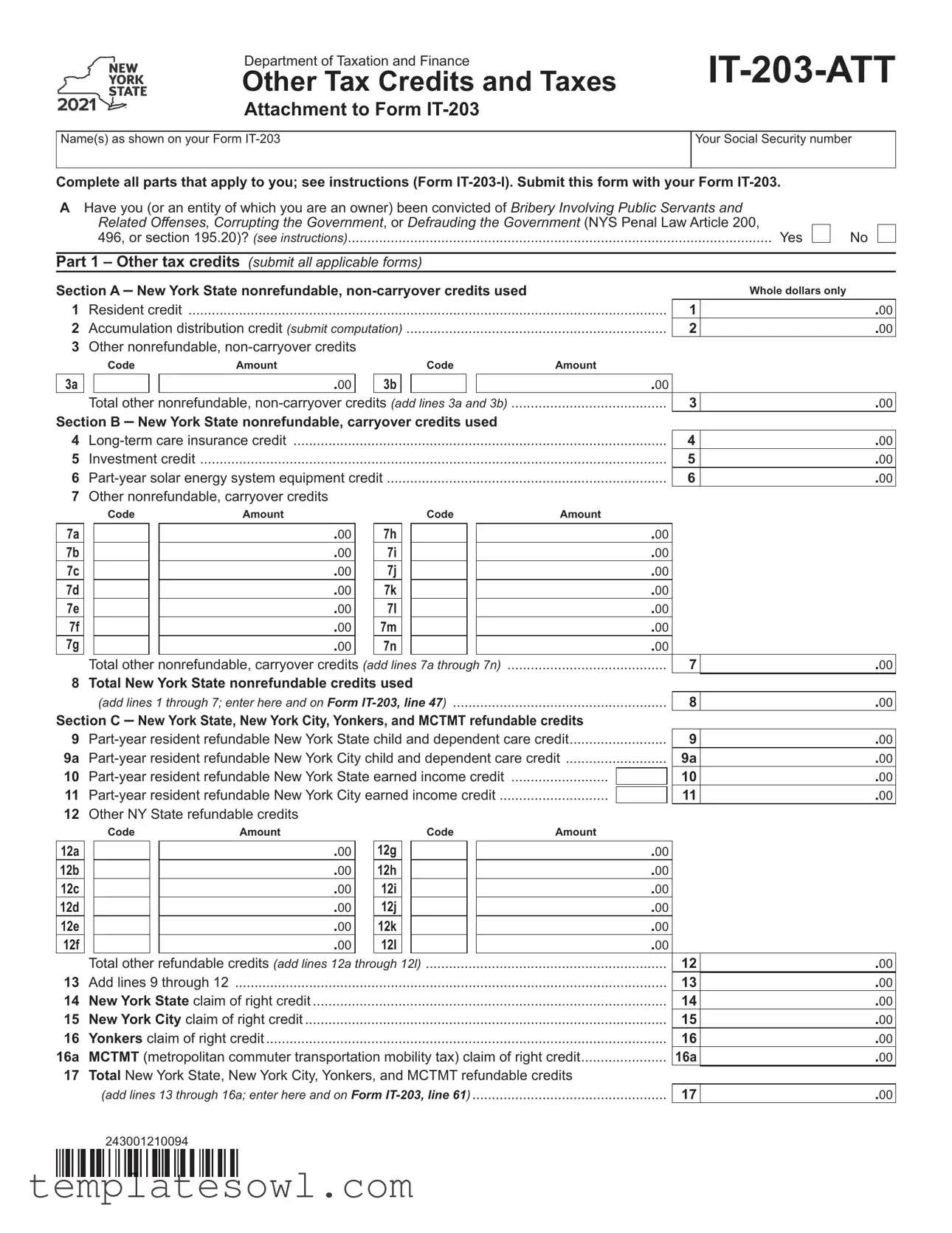Completing the IT-203-ATT form can be a straightforward task, but there are common mistakes that can lead to complications in processing your tax return. One of the first mistakes people often make is not providing their complete name and Social Security number. It's essential to ensure that your name appears exactly as it does on your IT-203 form, along with the correct Social Security number. Omitting or incorrectly entering this information can delay the processing of your form.
Another frequent error is failing to read the instructions for each section carefully. The form has specific requirements based on your situation. For instance, not all credits may apply to everyone, and selecting credits without verifying eligibility can lead to mistakes. It’s crucial to complete only the parts that apply to you, as advised in the instructions.
One of the more technical parts of the IT-203-ATT form involves calculating tax credits. Many individuals mistakenly enter amounts in the wrong fields or forget to add together the total credits. Always double-check your calculations, particularly in Section A and Section B, where you are asked to sum certain lines. Errors here could result in claiming too much or too little, impacting your overall tax liability.
Another mistake is using incorrect dollar amounts—people may accidentally use cents instead of whole dollars or vice versa. The form requires input in whole dollars only. Carefully reviewing each number will minimize this possibility and can prevent correction notices from the tax department.
Moreover, some filers overlook the additional forms that may need to be submitted alongside the IT-203-ATT. For example, if you claim certain tax credits, you must submit the applicable computation forms. Failing to include these forms can cause the entire return to be sent back for additional review.
Additionally, the timing of submissions can be a pitfall. Some individuals may forget to submit the IT-203-ATT with their IT-203 form. It's crucial to remember that these forms need to be filed together, ensuring that all relevant information is available for review at the same time.
Lastly, an often-overlooked requirement is to keep a copy of your completed forms. After filing, having a record for your own reference is beneficial if any questions arise regarding your tax return in the future. Not keeping this documentation could complicate matters if your return is audited.


